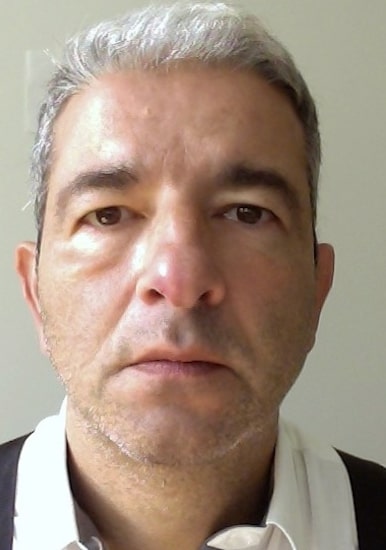Yves Rozenholc, Chairman of the Now.Museum

Yves Rozenholc is Professor of Data Science at Université Paris-Cité and Director of Research Unit 7537 BioSTM ‘Biostatistics, Processing and Modelling of Biological Data,’ which he set up in 2019 and heads up at the Faculty of Pharmacy. He invented the Now.Museum.
Yves Rozenholc is a professor of data science in applied mathematics and mathematical applications. An alumnus of the Lycée Henry-IV, with an initial training in mathematical statistics, he owes his introduction to methods using minimum penalized contrast to Lucien Birgé, as well as a broad understanding of statistical phenomena as a whole. Since then, he has focused on the role of model selection and, more generally, on the control of randomness.
He pursues his research through ‘walks’ and encounters, along paths that lead from mathematical statistics to methodological construction, and from statistical algorithms to applications of data science in medicine and biology, through to applications of data science in the arts, humanities and social sciences.
In these interdisciplinary interactions, he translates data of all kinds – images, figures, texts, curves, objects, etc. – into mathematical objects by means of successive exchanges, formalising them so that they can be processed statistically, so that an estimate or a test can be made with a view to obtaining a prediction or, more generally, knowledge. Whenever possible, he accompanies the preliminary collection of data, stressing that when this is poorly done, the data often turns out to be unusable. Yves Rozenholc often explains that there is always a price to be paid for extracting information from data, in terms of the amount of data, time or money involved, and that the information extracted from the data has a cost that needs to be recognised and paid for.
Research and collaborations
Yves Rozenholc was particularly interested in comparing signals in noisy environments by testing whether or not their difference was a null signal. Il s’est intéressé à la construction de tests de nullité par symétrisation tant d’un point de vue théorique, avec Cécile Durault, que d’un point de vue appliqué pour la segmentation des tumeurs en imagerie dynamique avec injection d’un agent de contraste.
It was at the Hôpital Européen Georges-Pompidou (HEGP) that Yves Rozenholc met Charles-André Cuenod, who was working on angiogenesis monitoring. Understanding that the medical practitioner’s parametric approach often came up against a modelling problem, he proposed a different approach, based on a non-parametric comparison of signals, which they carried out together for the ‘Angiogenesis and Cancer’ project, as part of a collaboration between the LRI-HEGP and MAP5 laboratories. The ‘Facial Reconstruction’ project, carried out at MAP5, arose from the need of Françoise Tillota, a specialist in forensic medicine, to develop an automated method of facial reconstruction with a view to creating robot portraits, using a mathematical approach developed with Yves Rozenholc.
Yves Rozenholc’s career has been marked by scientific dialogue. This is the case with Jean-Christophe Thalabard, a former polytechnicien and hospital practitioner at Hôtel-Dieu, who joined MAP5 with the idea of facilitating cross-disciplinary collaborations between mathematicians or medical doctors and biologists, promoting projects at the frontier between statistics and life. As for his association with Pierre Laurent-Puig, it concerns the analysis of high-throughput Single Nucleotide Polymorphism (SNP) data and the detection of tumour mutations to help personalise cancer treatments. Their work led to the development of the first tumour mutation detection method in 2015.
A statistician specialising in frontier research, Yves Rozenholc is, in his own field, that of the random world, in search of the exceptional. His interest lies not so much in the main phenomenon as in the outlier, or aberrant data. Rozenholc seeks to identify and then to understand the outlier state, an outlier that may or may not be identified with an error. For while the outlier may be an error, it may also be a sign. A Darwinian in the sense that he sees life as a series of outliers, or errors, some of which, by efficient chance, go from being unique phenomena to the majority and become perpetuated, Yves Rozenholc is interested in the role played by alea and outliers in adaptation, and, more generally, in the importance of alea in all living phenomena.
Invention of the Now.Museum
Since March 2020, his concerns have taken the form of the Now.Museum, an open science citizen project dedicated to capturing and documenting the present. This decentralised digital museum is based on ‘DFD4DFU’ (Decentralised FAIR Data for Distributed Fair Uses) technology, which combines the power of Dataverse’s metadata sharing with the flexibility of DIDs (Decentralised Identifiers) for access and use. n this way, it unites collections of metadata without copying them, or changing ownership or responsibility for them, in compliance with the General Data Protection Regulation. It allows this metadata to be used ‘à la carte’, for controlled exploration and annotation.
Scientific publications
Yves Rozenholc’s scientific publications in mathematics can be consulted on zbmath.org. Interdisciplinary papers (biology and medicine) are available on Pub Med, the portal of the National Library of Medicine.
